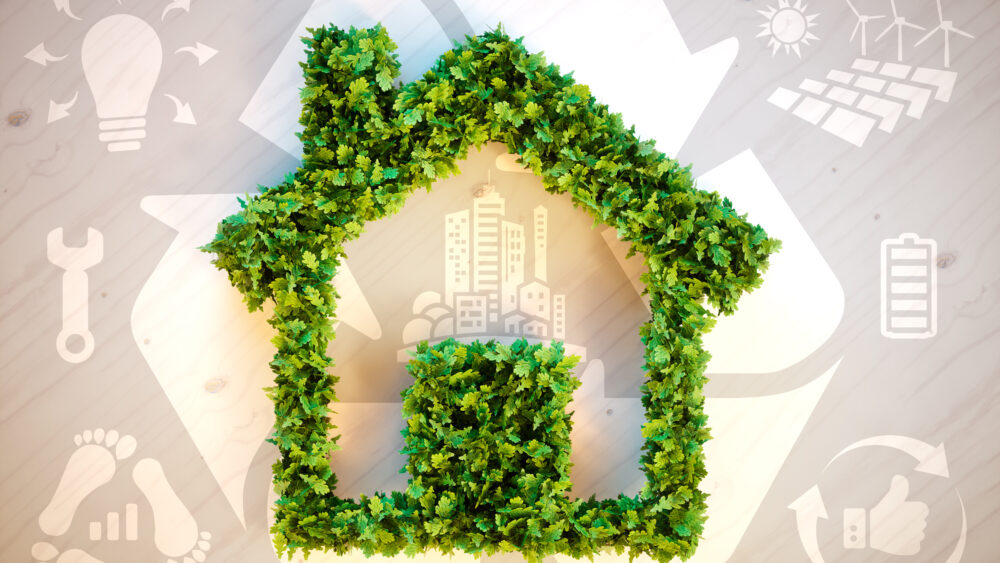Authored by Fraunhofer ISI
The 2015 Paris Agreement has as the central aim to strengthen the global response to the threat of climate change by keeping global temperature rise in this century well below 2 degrees Celsius above pre-industrial levels and to pursue efforts to limit the temperature increase even further to 1.5 degrees Celsius (United Nations 2015). To reach this ambitious goal, two central strategies have to be implemented in all countries: (i) enhancing energy efficiency (EE) and (ii) decarbonizing remaining energy supply and demand, in particular by large penetration of renewable energy sources (RES). Scenarios with different focuses and assumptions have been developed to map the European energy transition until 2050 (European Commission 2021b). While these scenarios present important tools to support decision makers, much more progress is necessary to quantify the impact of New Societal Trends on future energy demand and greenhouse gas (GHG) emissions.
Industry is responsible for about 22% of Europe’s GHG emissions making the sector critical for the achievement of European climate goals (EEA 2021). It is expected that the circular economy (CE) can contribute significantly to the achievement of these goals while enabling further economic growth (European Commission 2018b, 2019). Considering the challenging decarbonization of the industrial sector and especially the basic material industry, the umbrella concept CE can have great impact on industry transition by reducing virgin material demand and consequently industrial emissions. The concept includes strategies as recycling, material efficiency, material substitution and sufficiency. An ambitious increase in energy and material efficiency in all applications and sectors is a prerequisite for carbon neutral industrial production, as it reduces the final energy demand and thus lowers the costs for the expansion of renewable energies, grid expansion and the import of secondary energy sources.
The following report addresses the aforementioned research needs and describes an improved modeling approach to assess the role of CE as contributor to industry decarbonization. The study focuses on buildings – a typical end-use good – and the associated basic materials steel and concrete. The building value chain was chosen, as it is the main source of demand for two of the highest-emitting materials and has high CE potentials.
The bottom-up industry demand model FORECAST (FORecasting Energy Consumption Analysis and Simulation Tool) is a tool designed to support strategic decision. It calculates scenarios on future energy demand and GHG emissions (all sources incl. process emissions) and the assessment of different technology pathways (Fleiter et al. 2018). However, the model in its current form does not directly consider material flows or the effects of CE endogenously. The suggested method aims to consider cross-sectoral impact via a stock-driven material flow analysis (MFA) linking FORECAST with the building model Invert/EE-Lab (TU Wien et al. 2021). The chosen methodology enables the explicit consideration of CE actions at the relevant stages of the building value chain. In this study, the eight following actions were selected to represent the 9R framework (Kirchherr et al. 2017):
- Using timber instead of (reinforced) concrete in residential buildings;
- Reducing floor space demand in residential buildings and offices;
- Reducing the over-specification of elements by volume;
- Protection of cultural heritage buildings;
- Renovation of existing buildings;
- Reuse of building elements;
- Reuse of building materials;
- Recycling of cement.
The model results showed that the reference demand for steel and concrete until 2050 in the building sector of the European Union (EU) is still increasing. This is driven by the increasing floor space demand provided by Invert/EE-Lab in line with the EU reference scenario (European Commission 2021a). When looking at individual actions, the reduced over-specification and the renovation of existing buildings had the largest impact on material demand reduction. The lowest impact was allocated to the material-specific actions for reusing structural steel and cement recycling. In addition, three sets of CE actions were modeled:
- The first set included actions addressing changing lifestyles (“Lifestyle”);
- The second set addresses construction methods (“Construction”);
- The third set was a combination of the previous sets where a lower ambition level for the individual actions was considered (“Mix”).
Overall, the “Lifestyle”-set had a larger impact on material demand than the “Construction”-set due to the greater specific impact. Nevertheless, the changing construction methods reduced the steel inflow more than the action set addressing lifestyle due to the respective CE actions. The steel inflow of the “Mix”-set was lower than in the “Lifestyle”-set but higher than in the “Construction”-set, and the reverse for concrete. This indicates that a well-balanced set of actions which addresses both lifestyle and construction methods makes a relevant contribution without having to go to extremes in the implementation of actions. The reference results imply that without further efforts the material demand and consequently the energy demand and GHG emissions related to material production for the EU building sector will increase. Hence, the reduction of material demand through the analyzed circularity actions can contribute to the decarbonization of the industry sector.
By explicitly modeling the material flows along the entire value chain, the developed model enables a consistent endogenous assessment, both of individual CE actions and of different CE sets. This allows the evaluation of their contribution for industry decarbonization, which were previously only considered by exogenous scenario assumptions in FORECAST. Furthermore, the developed approach allows for the first time an integrated view on the development of the building sector through a soft linkage between the building and the industry sector models, which are normally run and analyzed separately. Nevertheless, some uncertainties remain. Both the framework assumptions as well as the mode parametrization could be validated by further literature reviews, in comparison with statistics and expert interviews.
Overall, the described work leads to an improved consideration of CE in bottom-up energy modeling. Consequently, scenario analyses considering CE for industry decarbonization can support the political debate and decision making.



Comments are closed.